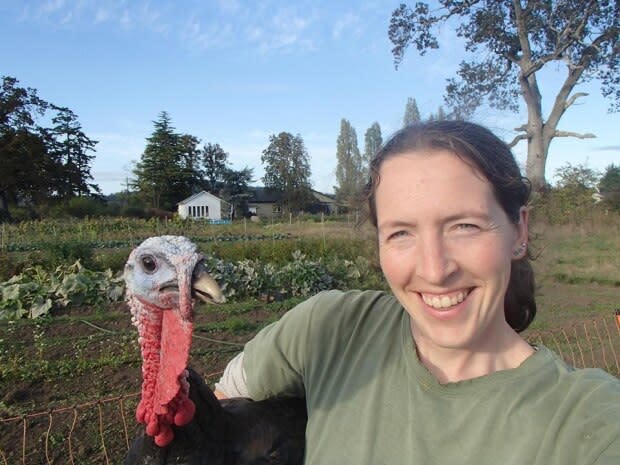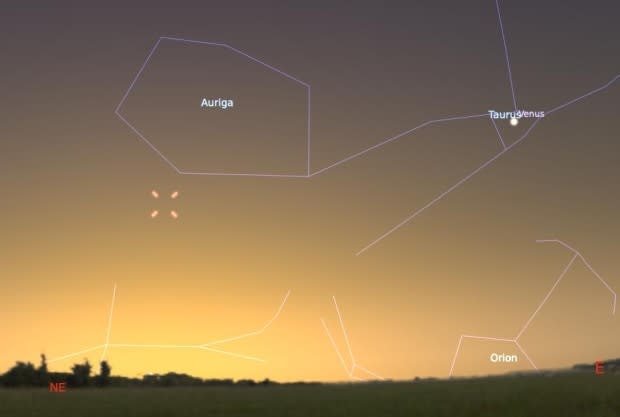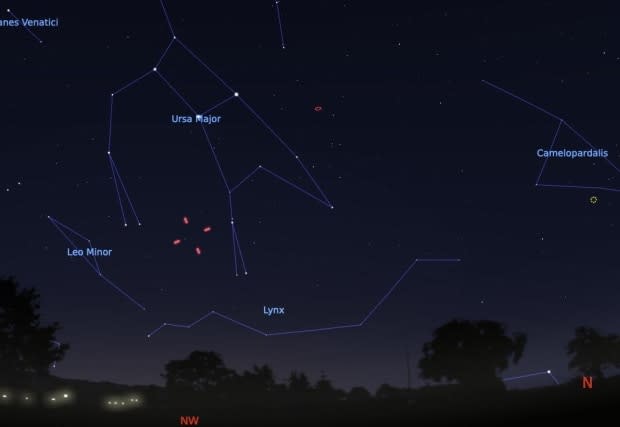Check out the skies to see the brightest comet in the past 30 years
There's a new comet streaking across our skies this month — one that won't return for thousands of years.
Comet NEOWISE, one of the brightest comets of the last 30 years, can be seen through binoculars in the early mornings, before daylight, in the eastern sky.
By early next week the comet will be in the western sky and you'll be able to see it with the naked eye in the evening after dark.
"It's the perfect classic comet," Samantha Lawler, an assistant professor of astronomy at the University of Regina, told The Morning Edition's Stefani Langenegger.
"It just had its closest approach to the sun a few days ago so it's melting nicely and putting on a very good show for us," Lawler said.

"You can see the brighter nucleus of the comet, which is the icy ball that is melting close to the sun. And you can see a tail coming off of it. [The tail] is made up of dust and icy particles that are basically melting off of the comet and blowing off into space, so it's really beautiful."
Comet NEOWISE was named for the space telescope that discovered it on March 27.
Its orbit around the sun takes a few thousand years.
The last really bright comet that we could see was Comet Hale-Bopp in 1995.
Lawler's research focuses on the orbit of small icy bodies in our solar system.
"Comets, they're sort of leftovers from when our planets first formed, so they tell us a lot about how our solar system was put together."

Lawler said Friday morning looks like it will be clear and Venus is at its brightest, making for a good time to get up early to see the comet.
"Find Venus and then look to the north a couple of fists, if you hold your fist out at arm's length."
To find Comet NEOWISE next week, Lawler said to look just below the bowl of the Big Dipper around 10:30 or 11 p.m.
"You should be able to see it without binoculars," she said, adding, "It still just takes my breath away to see a comet with my own eyes. It's amazing."
To get the best views Lawler suggests getting out from the city lights.
"Try to get outside town a little ways to a nice dark spot and it should be spectacular."

Comet NEOWISE will make its closest approach to Earth on July 22 at a distance of 103 million kilometres.
The comet should continue to brighten, though there is a chance that as it rounds the sun and warms it could break apart.
"It could continue getting brighter and more spectacular over the next couple of weeks or it might disintegrate," Lawler said.


